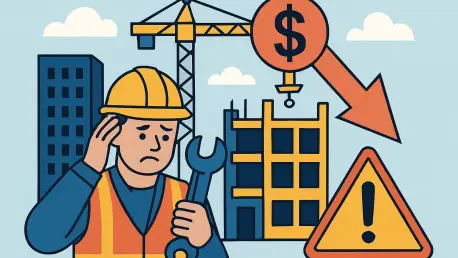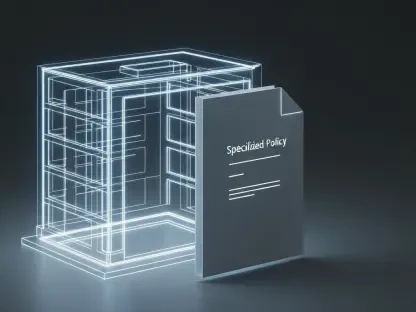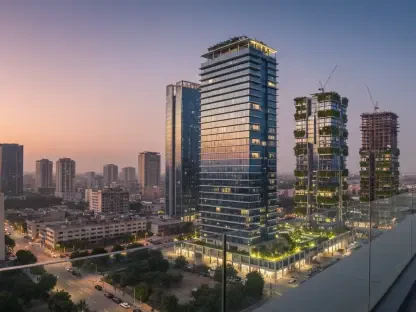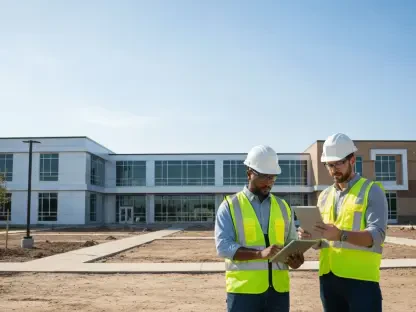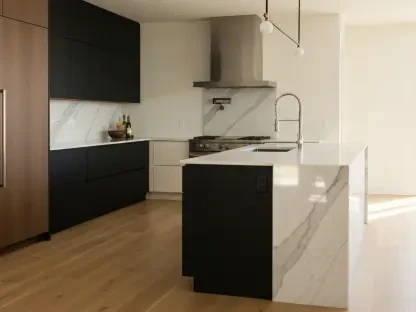The current landscape for nonresidential construction remains fraught with challenges, marked by economic uncertainties and an array of factors impeding growth. Persistently high interest rates, coupled with inflation levels that surpass targets, continue to erode consumer confidence and inject volatility into the economic environment. This instability is further exacerbated by slowdowns in home building and increased tariffs that disrupt the cost and supply dynamics within the construction industry. Despite the gloomy outlook, the forecast for 2023 is aligning closely with earlier predictions, although these were largely pessimistic with the expectation of only a 1.7% growth in spending this year and a marginal rise to 2.0% in the following year.
Stagnation in Commercial Sector
Limited Growth Forecast
The commercial sector, in particular, embodies the sluggish growth that characterizes the broader nonresidential construction industry, with projections reflecting only a 1.5% increase in spending for this year. Managers and industry analysts anticipate a gradual uptick in growth, which is expected to reach around 3.9% by 2026, demonstrating some positivity yet lacking significant momentum to propel substantial economic recovery within this segment. Companies within the sector face hurdles in managing costs and maintaining competitive pricing amidst rising operational expenses driven by labor shortages and tariff-induced price escalations on materials. These conditions necessitate strategic planning and innovation to navigate the complex landscape effectively, compelling firms to optimize operations and reconsider traditional methodologies in pursuit of sustainability.
Impact of Labor and Tariff Issues
Labor shortages persist as a formidable challenge, largely driven by restrictive immigration policies that have influenced the available workforce within the construction sector. These policies exacerbate the existing deficits in the labor market, necessitating firms to seek alternative solutions or risk project delays and escalated costs. Additionally, the introduction of higher tariffs has compounded these pressures by generating uncertainty in cost expectations and threatening to incite retaliatory trade measures. While some research suggests that tariffs might not lead to rampant inflation or a full-blown economic downturn if regarded as temporary measures, the specter of potential trade wars looms ominously, casting a shadow over strategic planning within the industry.
Decline in Manufacturing Facility Construction
Diminishing Investments
The manufacturing facility construction industry, once hailed as a beacon of growth and profitability, now faces a projected decline, evidenced by anticipated drops of 2.0% this year and 2.6% next year. This downturn can be attributed to both domestic and global factors, including reduced investments due to economic instability, which deters long-term capital commitments. The ripple effects of dwindling demand in manufacturing sectors challenge construction stakeholders to revise their forecasts and recalibrate their expectations, revisiting project scopes and scaling back expansions where necessary to align with current economic realities and curtail potential revenue losses.
Strategic Adaptations to Market Trends
Amidst these adversities, companies are prompted to adapt strategically to evolving market trends, leveraging technology and innovation to optimize their operational frameworks. Emphasizing efficiency, environmental sustainability, and adaptability becomes imperative, as firms explore the potential of digital solutions and advanced construction technologies to enhance productivity and reduce waste. Strategic shifts towards diversification and exploring emerging markets also provide avenues for growth, allowing businesses to mitigate risks associated with economic slowdowns and maintain resilience in an unpredictable financial landscape.
Resilience in Institutional Facilities
Positive Projections
In stark contrast, institutional facilities demonstrate resilience, with growth projections for this year at 6.1% and sustained positive trends anticipated as high as 3.8% by 2026. These facilities, which encompass critical infrastructure such as healthcare, education, and government buildings, benefit from public investment and policy initiatives aimed at bolstering essential services and supporting community development. Institutional construction presents a relative bright spot within the otherwise stagnant industry landscape, supported by funding aimed at infrastructure modernization and enhanced service delivery capabilities.
Role of Government and Public Initiatives
Government-backed investments play a pivotal role in sustaining growth within institutional sectors, underscoring the importance of public-private partnerships and collaborative approaches to project delivery. Policy initiatives, incentivizing sustainability, and technological advancement serve as catalysts for the development of state-of-the-art facilities, adjusted to meet the evolving needs of populations and emerging challenges, such as climate change and societal shifts towards digital and remote operations. Hence, leveraging these opportunities for collaboration and capitalizing on institutional strengths becomes a priority for driving sustained growth and contributing to broader economic recovery.
Navigating Future Challenges
The nonresidential construction sector currently faces a myriad of challenges, largely shaped by economic unpredictability and numerous obstacles hindering expansion. Consistently high interest rates and elevated inflation, exceeding desired levels, are diminishing consumer confidence and injecting instability into the economic landscape. This volatility is intensified by downturns in the housing market and heightened tariffs, which further disrupt the costs and supply chains critical to the construction industry. Yet, amid these bleak conditions, the 2023 forecast remains fairly aligned with prior expectations, although those were largely grim, predicting merely a 1.7% increase in spending for this year with a slight uptick to 2.0% in the next year. While the outlook is not overly optimistic, understanding these challenges highlights the need for strategic planning and adaptive policies within the industry to navigate through economic uncertainties, ensuring sustainable growth and stability in the longer term.
